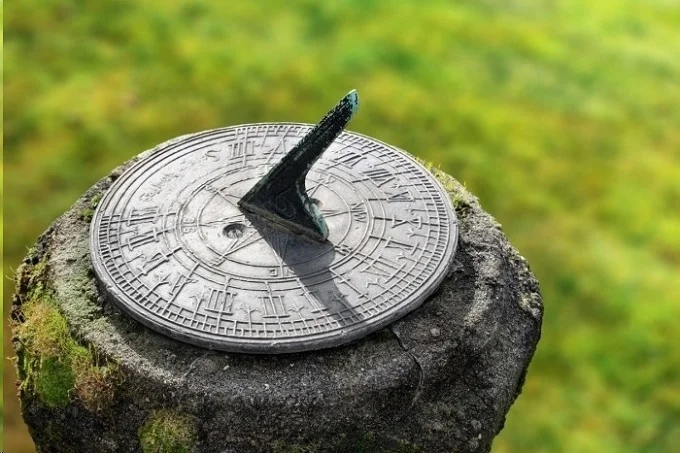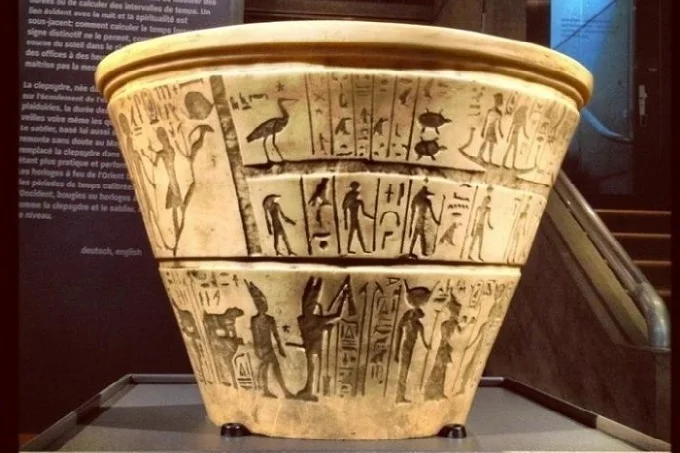Gnomons, Clepsydras, and other ways our ancestors determined time

Millions of people’s lives are controlled by the clock face. It has become so ingrained in our culture that it is impossible to picture living without it. Although ancient humans could predict the time with a tiny inaccuracy, they were only able to do so with a limited margin of error.
Our content shows you how they achieved it and what you’ll need to do it.
Gnomon – the sun is shining, and the clock is ticking

A sundial was used to determine time before mechanical watches became popular. This gadget contained three details: a gnomon, which is an element that casts a shadow, a dial on which this shadow falls, and a third, conditional component – the sun itself, which “winds” this particular watch.
For the computation of which geographical coordinates are utilized, lines are affixed to the dial, and the gnomon has a size and form. That is to say, each sundial is made for a certain location. Their creation is a time-consuming and complicated procedure that requires knowledge and expertise. As a result, such gadgets were costly.
It was simpler: our forefathers built a high pole into the ground and projected a shadow. It was feasible to determine the time by watching the size of the shadow. It wasn’t perfect, of course. However, by comparing the length of the shadow at various periods of the day, such as midday, evening, or dawn, and measuring it at different seasons of the year, our forefathers devised a reasonably accurate time determinant.
Everything would be wonderful if the sun shined all the time. Unfortunately, this is a work of fiction; rain, clouds, and other forms of terrible weather are all too often. When we examine the peculiarities of northern locations, where the sun does not rise very far above the horizon, causing the gnomon’s shadow indication to be quite lengthy, it becomes clear that the sundial is not the sole accurate year-round alternative.
Clepsydras

Water clocks are a sort of clock that does not rely on sunlight. Clepsydra is the scientific name for them. When you break this word down, you’ll see that it’s made up of the words klepto, which means “to conceal,” and hydro, which means “water.”
The most basic clepsydra is made up of two containers that are put at separate levels. A hole at the top allows water to fall into the bottom one drop at a time. The time was calculated by watching how the water level in the top vessel drops or increases in the bottom vessel. According to one theory, here is where the phrase “the passing of time” originated.
Because the speed of water flow is affected by the pressure in the vessel, the container started to be manufactured in the shape of a truncated cone. The clepsydra has an advantage over the sundial in terms of construction since the system of communication vessels may be perfected. They may be used at any time of day and provide more precise timekeeping.
However, they can only be utilized while the water is liquid. Unfortunately, frosts are common, and they may easily freeze. The general public did not commonly utilize such structures; they were mostly employed during religious events and were dubbed “hydrology.”
Flowers, roosters, and larks for the poor
Watches have long been considered a status symbol in the world. Ordinary folks made do without complicated processes by devising their own techniques. Natural processes were not a mystery to our forefathers, who were keen observers.

Consider the case of birds. The alarm clock in ancient times (and in many communities now) was unmistakably a rooster, which crooned three times a night: the first after midnight, the second about two a.m., and the third early in the morning, around the start of the fifth. Orioles, larks, and sparrows all awoke at the same moment and started their choruses. It was simply required to watch, listen to the elders’ guidance, and recall the events of the past.
The peasants were watching the flowers because they blossom and close at a certain time when they face the sun. And, of course, there’s the sun. Some parts of the world divided the day into day and night based on the movement of the celestial bodies. The sun was at its greatest position at noon, which was the center of the day. The later it is, the longer the shadows cast by items will be.
There was no electricity in ancient times thus, there was no way to light the huts. Yes, there were candles, but using them all the time was not cost-effective. As a result, darkness fell over the home as soon as the sun set, allowing you to sleep well.
Furthermore, our forefathers did not need a precise concept of time, such as minutes or seconds. For what purpose? It dawns; you may go to the fields and labor until sundown; they return to the settlement at twilight. Shepherds, for example, used bast shoes on their feet to measure the shadow of a tree. You may gather a herd and guide them home now that the shadow has reached seven bast shoes.
The process of replacing temporal concepts with spatial ones is interesting, for example: “Is this village far? “Yes, it’s a bit far, two days’ walk.” The segment that could be covered in one day was called the bottom.
The biological clock is quite clear
Everyone knows about the biological clock today, this is the name of the internal circadian rhythm. It takes years to form it, with its help, all the biological processes of the human body are formed. We are hungry, which means that it is time for dinner, to which we are accustomed. We want to sleep – you can look at the clock to make sure that it is already midnight (one in the morning, two, and so on), depending on the habit.
Our ancestors lived according to a strict schedule. The peasant woman knew that she did not need to call her husband to dinner. He came himself or was already waiting for his wife in the field because hard work and habit did their job, and the appetite played out very strongly. The measured, monotonous nature of life, following a certain routine, the absence of artificial lighting made orientation in time simple and somewhat conditional.




